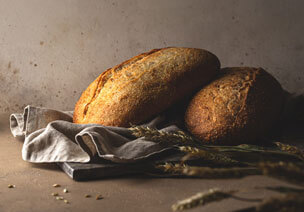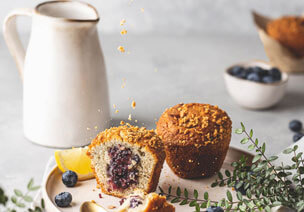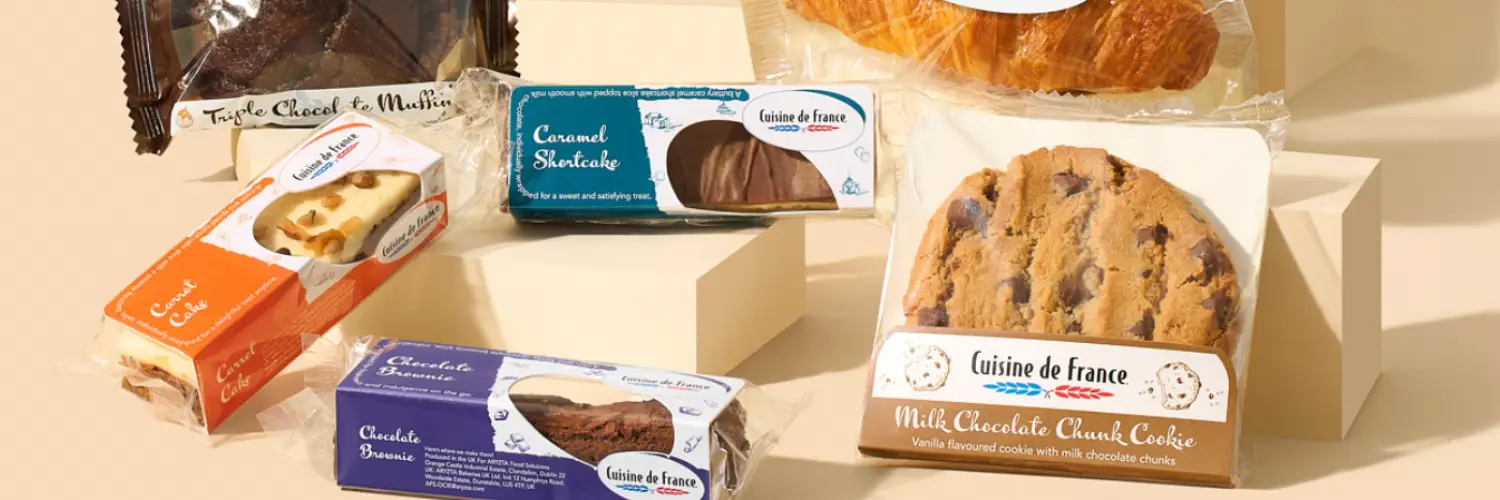Get our brochures
The Science of Baking: What Makes the Perfect Sourdough Loaf?
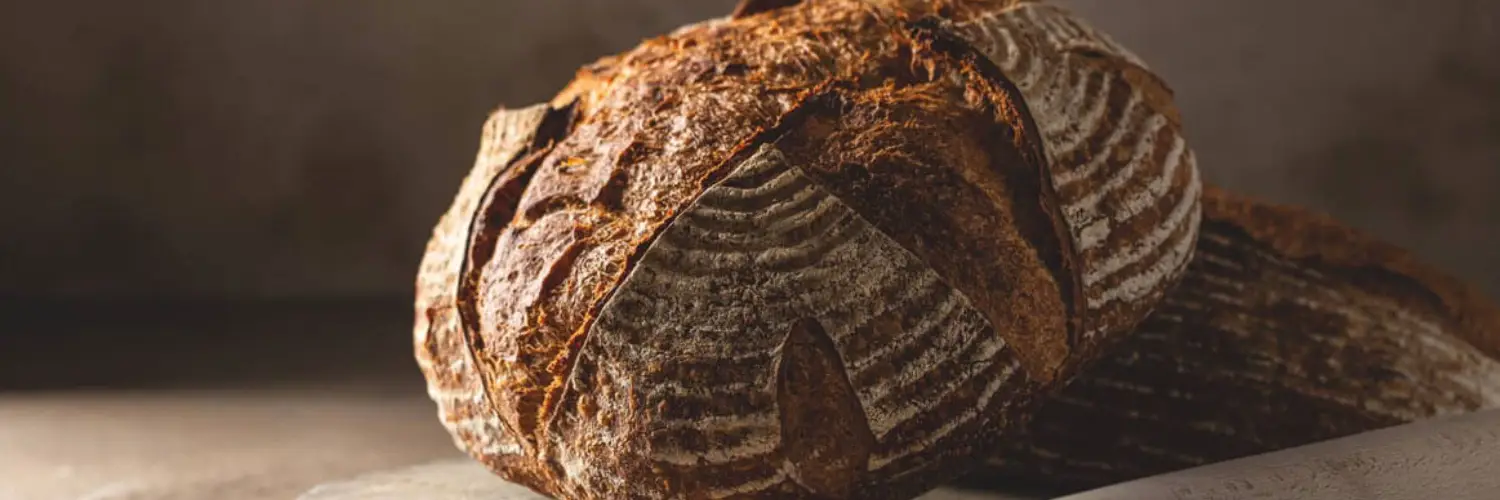
There’s a reason sourdough has stood the test of time; it’s equal parts tradition and science.
Behind every golden crust and open crumb is a carefully balanced process built on fermentation, hydration, flour chemistry and patience.
For professionals, understanding the science behind great sourdough is the difference between a good loaf and an unforgettable one.
In this blog, we’ll explore the core elements of sourdough baking, clear up some common misconceptions, and then hear from ARYZTA’s NPD Process & Test Baker, Mary Murphy, for her take on what makes sourdough so special.
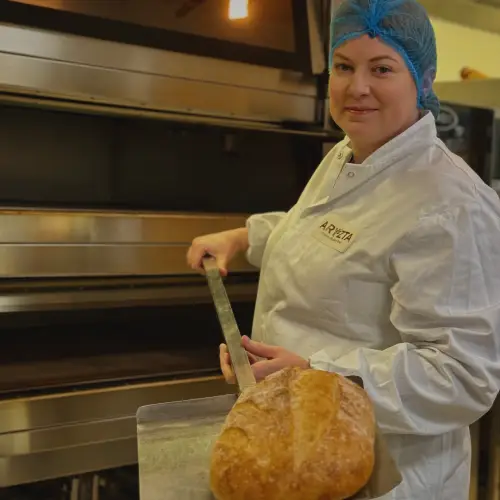
The Science Behind Sourdough
Sourdough differs from other breads in one key way: it’s made without commercial yeast. Instead, it uses a natural starter – a fermented mixture of flour and water that creates wild yeast and lactic acid bacteria. That’s where the chemistry begins.
From fermentation to crust development, the science of sourdough is driven by:
- Hydration – Impacts crumb structure, chewiness, and crust
- Fermentation – Allows gluten development, flavour creation, and gas retention
- Flour type – Determines strength, fermentation speed, and flavour profile
- Temperature – Controls proofing time and flavour acidity
Each of these variables works in tandem, and small adjustments can dramatically impact your final result.
Myths & Misconceptions About Sourdough
Even among experienced bakers, there are lingering myths around what makes a great sourdough. Let’s clear a few up:
Myth 1: A strong sour taste means better sourdough.
Not necessarily. True sourdough flavour is about balance. Acidity comes from fermentation time and temperature, but a great loaf delivers depth: nutty, toasted, even slightly sweet notes – not just tang.
Myth 2: Any flour will do.
The type and quality of flour matters. High-protein flours help create strong gluten networks, which are essential for structure and rise. Low-quality or inappropriate flour can lead to flat, dense loaves even if the fermentation is done correctly.
Myth 3: Sourdough takes days to make.
While sourdough benefits from time, efficient production is possible. With the right starter, fermentation control, and proofing environment, a high-quality loaf can be achieved within a well-structured bake schedule.
Myth 4: A perfect starter guarantees a perfect loaf.
A strong starter helps, but shaping, hydration, fermentation time, and baking conditions all need to work together. A great starter can’t fix poor technique or rushed processes.
Common Mistakes Bakers Make
Understanding what not to do is just as valuable as knowing what works. Among the most frequent sourdough missteps:
- Inconsistent starter feeding
- Incorrect proofing times (over or under)
- Poor dough handling and shaping
- Using low-protein flour without adjustments
- Not accounting for temperature variation in the bakery
Getting the details right – timing, mixing, flour choice, and temperature makes all the difference.
Expert Q&A with Mary Murphy, NPD Process & Test Baker at ARYZTA
To get a deeper understanding, we asked Mary Murphy to weigh in on some of the most common questions around sourdough baking.

Q: What’s the ideal hydration level for sourdough, and how does it affect texture?
The ideal hydration level is between 60–80%. Higher hydration increases extensibility, creates an open, irregular crumb, and leads to a chewy texture with a crisp crust.
Q: How long should sourdough ferment, and what are the key signs it’s ready to bake?
Longer fermentation improves flavour. Key signs it’s ready: dough has increased by 50–75% in volume, the surface is taut but doesn’t tear, and a finger press springs back slowly, leaving a slight indentation.
Q: What role does flour type play in the quality of sourdough?
Flour quality impacts everything. High-protein flours support better gluten formation. Rye, wholegrain, and spelt add flavour and speed up fermentation.
Q: Why do sourdough loaves sometimes come out too dense or flat?
Usually, it’s underproofing or a weak gluten network. Overproofed dough or undermixed dough can’t trap gases, resulting in collapse.
Q: Is there an optimal starter age or maintenance method for consistent results?
A new starter takes 10–14 days to mature but becomes stable after 3–4 weeks. Consistency in feeding (same flour, time, water, and temperature) is key.
Q: How does temperature impact fermentation in professional baking?
Cooler temperatures slow fermentation, allowing more lactic and acetic acid development. This leads to a lower pH, better shelf life, and more complex flavour. It also helps develop the “fish eyes” on crusts for a more artisan finish.
Q: What makes a good sourdough loaf great?
A great loaf has deep flavour, open crumb, a caramelised crust with fish eyes, and a sharp ear. It excels in every category.
Q: What trends are emerging in sourdough baking for 2025?
We’re seeing demand for larger loaves with a darker, more rustic artisan bake.
There are no shortcuts to the perfect sourdough loaf – it’s about science, skill, and attention to detail. And with sourdough continuing to grow in popularity with consumers, there’s never been a better time to expand your bakery’s bread options.
If you want to know how ARYZTA applies this expertise in product development and innovation, contact our team to talk sourdough, NPD or our full range of bakery solutions.


